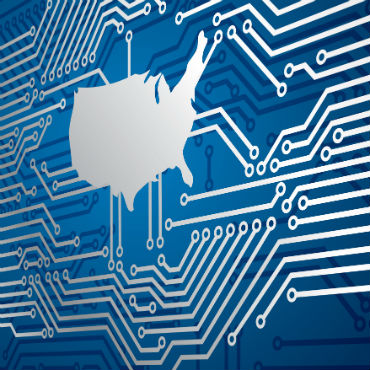53 steps to stronger cybersecurity

The Commission on Enhancing National Cybersecurity issued its long-awaited report, which calls for (among many other things) a new agency to consolidate, administer and secure federal IT infrastructure.

The Commission on Enhancing National Cybersecurity on Dec. 2 unveiled its recommendations to the White House on how to address the nation's biggest and most urgent cybersecurity issues. The 100-page report, which addresses both President Barack Obama and President-elect Donald Trump, calls for immediate and longer-term actions from government and commercial interests alike.
The report includes 53 suggested action items in all, including the creation of an appointed post of assistant to the president for cybersecurity. That individual would report through the national security advisor, and "inform and coordinate with the Director of OMB on efforts by the Federal CIO and CISO to secure federal agencies."
Another recommendation, which would have repercussions for virtually every federal IT system, urges the administration to "establish a program to consolidate all civilian agencies' network connections (as well as those of appropriate government contractors) into a single consolidated network."
While acknowledging that agency-by-agency procurement and management of IT infrastructure allows for mission-specific optimization, the commission argued that such independence "fails to take advantage of certain aspects of the IT infrastructure that work better at scale when managed as a shared resource. Two areas, in particular, would benefit: providing secure and reliable Internet connectivity to federal agencies, and procuring standard devices and services."
The federal government is already making moves in this direction under category management policies which allow buyers to choose from a limited menu of standard configurations in laptop and desktop computers. A similar policy is designed to check runaway spending on mobile devices and service plans.
The commission is also looking to centralize cyber responsibility and authority.
"Congress should consolidate cybersecurity and infrastructure protection functions under the oversight of a single federal agency," the report states, "and ensure this agency has the appropriate capabilities and responsibilities to execute its mission." The consolidated network would then be administered by that agency.
More broadly, the commission also looked to inform the incoming administration on where the biggest cybersecurity fires are. The report centers on six imperatives, which were outlined in November:
- Protecting, defending and securing today's information infrastructure and digital networks.
- Innovating and accelerating investment for the security and growth of digital networks and the digital economy.
- Preparing consumers to thrive in a digital age.
- Building cybersecurity workforce capabilities.
- Better equipping government to function effectively and securely in the digital age.
- Ensuring an open, fair, competitive and secure global digital economy.
The commission acknowledged the "urgency" of cybersecurity issues and said most of its recommendations could, and should, start sooner rather than later. While the consolidated governmentwide network was deemed a medium-term goal, many of the other actions are intended for the first 100 days of the new administration.
Among those near-term recommendations is that the next administration should require all federal agencies to use National Institute of Standards and Technology's Cybersecurity Framework, as well as require that all Internet-based federal government services provided directly to citizens use "appropriately strong authentication."
All federal agencies, the report states, should be required by the next administration to use strong authentication with their employees, contractors and others using federal systems. It also recommends that the federal government serve as a source to validate identity attributes to help with online identity issues.
On the commercial side, the report recommends the incoming administration should also convene, within 100 days of taking office, a summit of business, education, consumer, and government leaders to plan for the launch of a new national cybersecurity awareness and engagement campaign.
The report also calls on the new administration to issue an executive order within 60 days directing NIST to work with industry and voluntary standards organizations to identify existing standards, best practices and gaps for secure Internet of Things devices and systems. The stakeholders are urged to "rapidly agree" on a set of standards for IoT devices and systems.
The commission also recommended that the government extend more incentives to companies that have already implemented cyber risk management principles and demonstrated collaborative engagement.
Beyond the six imperatives, the commission identified other areas requiring more consideration. Those areas include incentivizing cybersecurity behaviors and actions among commercial companies; determining who should develop certain urgently needed standards; establishing consensus on who should determine if those standards were being met; and exploring the feasibility of cybersecurity labeling and ratings systems.
In the commission's final meeting in mid-November, the 12 commissioners leaned towards a less-regulatory and more market-driven approach to getting cyber protections into commercial products and services. Rather than tasking industry with a new set of regulations, the committee aimed to make cybersecurity a selling point for goods and services, much like safety features automobiles such as seat belts and airbags have become.
The final report echoes that moderation, noting that previous blue-ribbon efforts have produced "recommendations that, while arguably in the best interest of the security of the nation, were not realistic, given the market forces at the time they were written or in the present day."
This time it's different, according to the commission. These recommendations, the report states, "balance ambitious, long-term goals with practical and pragmatic solutions."
NEXT STORY: Feds help bag international malware platform


